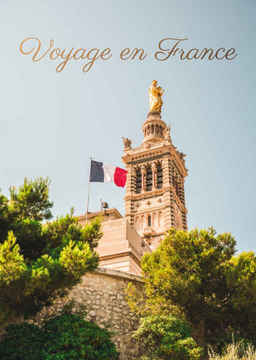









Difficulty:
 Advanced
Advanced
France
Hilaire shows us some of the more unusual clogs at the Clog Museum, from souvenirs clogs made for American troops in World War II to clogs made for cracking chestnuts.
Difficulty:
 Adv-Intermediate
Adv-Intermediate
France
We continue our visit to the Clog Museum and learn about these very old machines that are still in use today.
Difficulty:
 Adv-Intermediate
Adv-Intermediate
France
Sophie and Patrice share their impressions of Paris under a gray sky. They say that the multiple shades of gray make Paris all the more beautiful. Even the old buildings blackened by years of grime add texture and beauty, but they concede that a good clean-up is sometimes necessary.
Difficulty:
 Adv-Intermediate
Adv-Intermediate
France
Hilaire summarizes all the steps in the clog-making process. The Clog Museum has descriptions with models in relief for the blind and visually impaired.
Difficulty:
 Adv-Intermediate
Adv-Intermediate
France
We continue our series on clog making. Hilaire explains step three, the hollowing out of the clog with special equipment, and the finishing stage, sanding the outside and drying the wood.
Difficulty:
 Adv-Intermediate
Adv-Intermediate
France
We continue our visit to the Clog Museum with Lionel and Hilaire who will teach you how to use some very interesting tools for clog manufacturing.
Difficulty:
 Adv-Intermediate
Adv-Intermediate
France
Hilaire from the Clog Museum shares some more interesting facts about clog manufacturing back in the day. For instance, clogs used to be sold without a strap—the buyer would have to put one on him or herself.
Difficulty:
 Adv-Intermediate
Adv-Intermediate
France
In part two on this series on the Clog Museum, we meet the last remaining clog maker in the village. And surprisingly, he isn't wearing clogs!
Difficulty:
 Adv-Intermediate
Adv-Intermediate
France
Lionel visits the Musée du Sabotier (Clog Museum) in the village of Soucht, where the traditional craft of clog making has been practiced for centuries.
Difficulty:
 Adv-Intermediate
Adv-Intermediate
Côte d'Ivoire
Now that Ivory Coast is enjoying its first marine protected area, the seabed and sea creatures like turtles and stingrays have a chance to recover from human onslaught. And what better custodians of the sea than former poachers turned antipoaching rangers?
Difficulty:
 Adv-Intermediate
Adv-Intermediate
Côte d'Ivoire, France
The Ivory Coast government decided to create the country's first marine protected area in December 2020. The sea turtle population is starting to flourish now that they're no longer a food source for the locals, but a drawing card for tourists who come to watch them hatch.
Difficulty:
 Adv-Intermediate
Adv-Intermediate
Côte d'Ivoire, France
Nader finally managed to find an elephant in Côte d'Ivoire, but not where he'd hoped. Along the way, he stopped at the "chimpanzee island," which sadly only has one inhabitant.
Difficulty:
 Adv-Intermediate
Adv-Intermediate
Côte d'Ivoire, France
Nader is in Ivory Coast in search of elusive elephants. But first, he and his team must find the Fula people, who might know of their whereabouts. Will it be a successful mission?
Difficulty:
 Adv-Intermediate
Adv-Intermediate
Côte d'Ivoire, France
Nader discusses the declining animal population in Ivory Coast and throughout the world. Due to deforestation and poaching, many species, including the elephant, are endangered.
Difficulty:
 Advanced
Advanced
France
We Are The Painters is a duo of artists, Nicolas Beaumelle and Aurélien Porte, who rework classical subjects such as landscapes and the Madonna in their experimental approach to painting. Their recent exhibit in Nice was spread over three locations.
Are you sure you want to delete this comment? You will not be able to recover it.